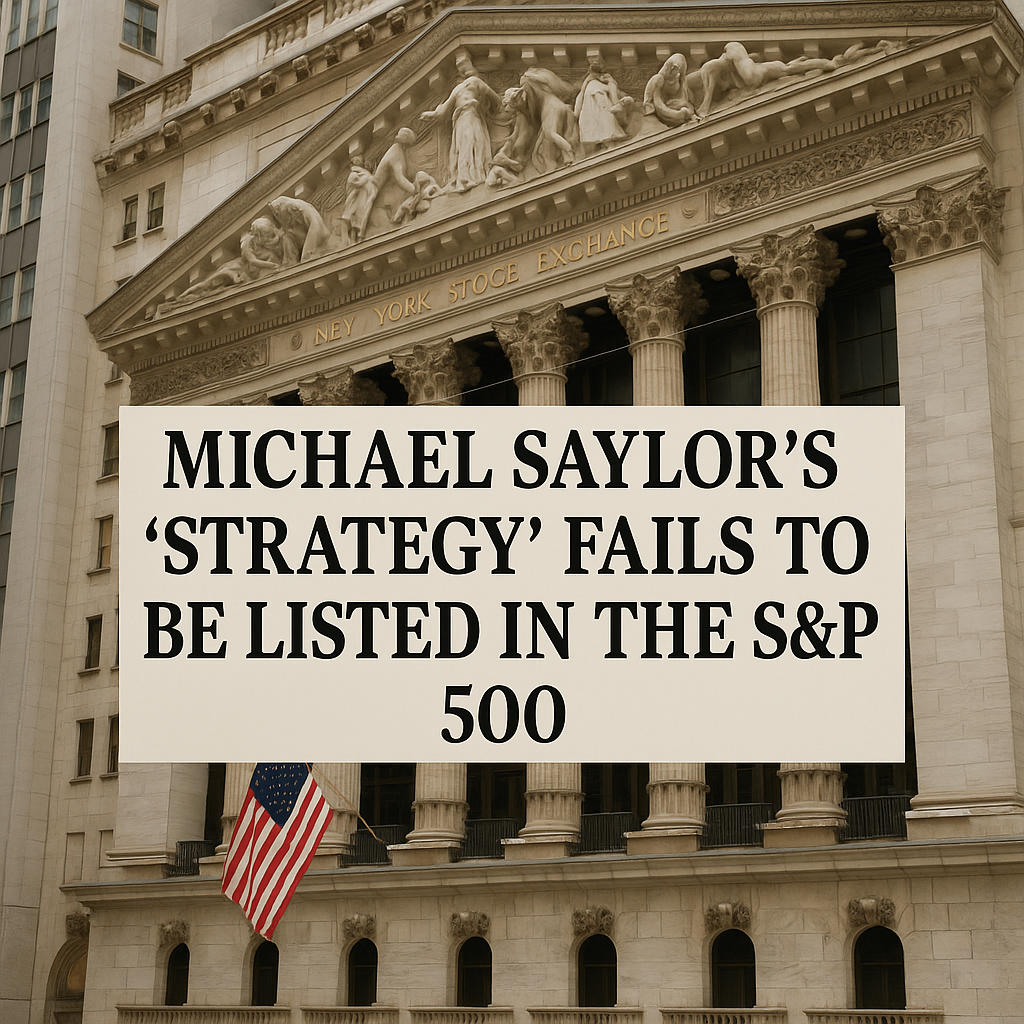Background
Strategy Inc, formerly known as MicroStrategy, is best recognized today not for its original software business but for its aggressive Bitcoin accumulation strategy. Under Michael Saylor’s leadership, the company has transformed into a corporate vehicle holding one of the largest Bitcoin treasuries in the world. Because of this pivot, the company’s stock has become tightly correlated with Bitcoin’s price swings. Every rally or crash in BTC significantly affects Strategy’s market value, leading to sharp movements in its earnings, which are dominated by unrealized crypto gains or losses.
The S&P 500 Rejection
In early September 2025, many market watchers expected Strategy to be added to the S&P 500. On paper, the company met all technical eligibility criteria: market capitalization, liquidity, public float, and profitability across the last four quarters. However, despite this, the S&P committee passed over Strategy. Instead, Robinhood, AppLovin, and Emcor were selected to join the index beginning September 22, 2025.
The news hit Strategy’s stock immediately. Shares of MSTR fell about 2–3% in after-hours trading following the announcement. Michael Saylor himself responded with a mix of humor and defiance, posting cryptic remarks on social media and later highlighting that Strategy’s one-year performance had far outpaced the S&P 500 itself.
Why the Snub Happened
- Volatility of Earnings
Strategy’s profits are heavily tied to Bitcoin price fluctuations. Even though recent quarters showed profitability, past quarters recorded steep losses when BTC declined. The lack of earnings consistency is one of the biggest obstacles to inclusion, since the S&P 500 typically favors companies with stable, repeatable profit streams. - Risk and Asset Concentration
Strategy is seen by many as more of a speculative Bitcoin fund than a diversified technology company. With billions of dollars in BTC on its balance sheet, it carries risks uncommon among traditional corporations — ranging from regulatory scrutiny to accounting complications. This concentration makes some index overseers wary of adding it to a benchmark relied on by millions of conservative investors. - Committee Discretion
While the S&P 500 uses clear eligibility rules, the final decision is not automatic. A secretive committee has full discretion over which companies to add, allowing them to weigh factors beyond the rulebook. Analysts noted that Strategy’s Bitcoin-heavy profile may have been too volatile for the index at this time. - Alternative Candidates
The decision to admit Robinhood, AppLovin, and Emcor instead indicates the committee preferred firms with more balanced business models and broader sector exposure. Robinhood in particular represents fintech growth with multiple revenue streams, while Strategy remains defined primarily by its Bitcoin treasury strategy.
Implications of the Decision
- Missed Passive Inflows
Being left out of the S&P 500 means Strategy will not benefit from the massive automatic buying power of index funds and ETFs that mirror the benchmark. This exclusion limits both liquidity and potential long-term valuation uplift. - Investor Sentiment
The rejection may reinforce investor concerns about Saylor’s approach. For supporters, it highlights how traditional finance remains cautious about crypto-heavy firms. For skeptics, it validates doubts about the sustainability of Strategy’s reliance on Bitcoin. - Future Prospects
The door is not permanently closed. Strategy continues to meet the technical rules, and if it delivers consistent profits in coming quarters, its chances of eventual inclusion remain. However, until volatility subsides or the financial establishment grows more comfortable with crypto-exposed companies, it may continue to be sidelined.

Conclusion
Michael Saylor’s Strategy had appeared to be a prime candidate for the S&P 500, but its heavy reliance on Bitcoin ultimately worked against it. Despite outperforming the index in raw returns, the company’s lack of stable earnings and high volatility made the S&P committee hesitant to include it. The episode highlights a broader tension between traditional finance, which prizes predictability, and crypto-driven firms, which thrive on bold risk-taking.











